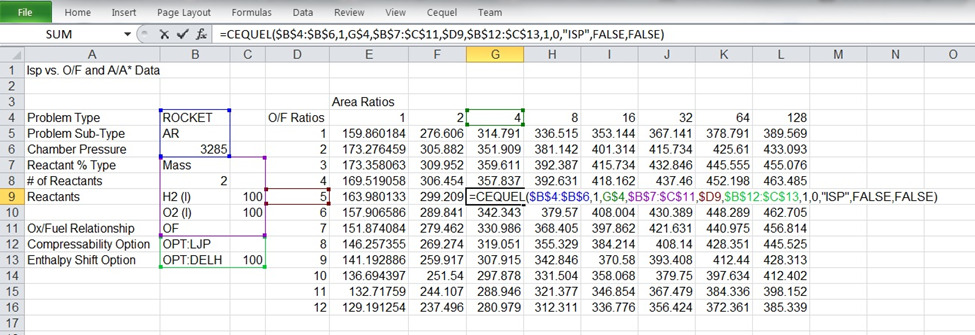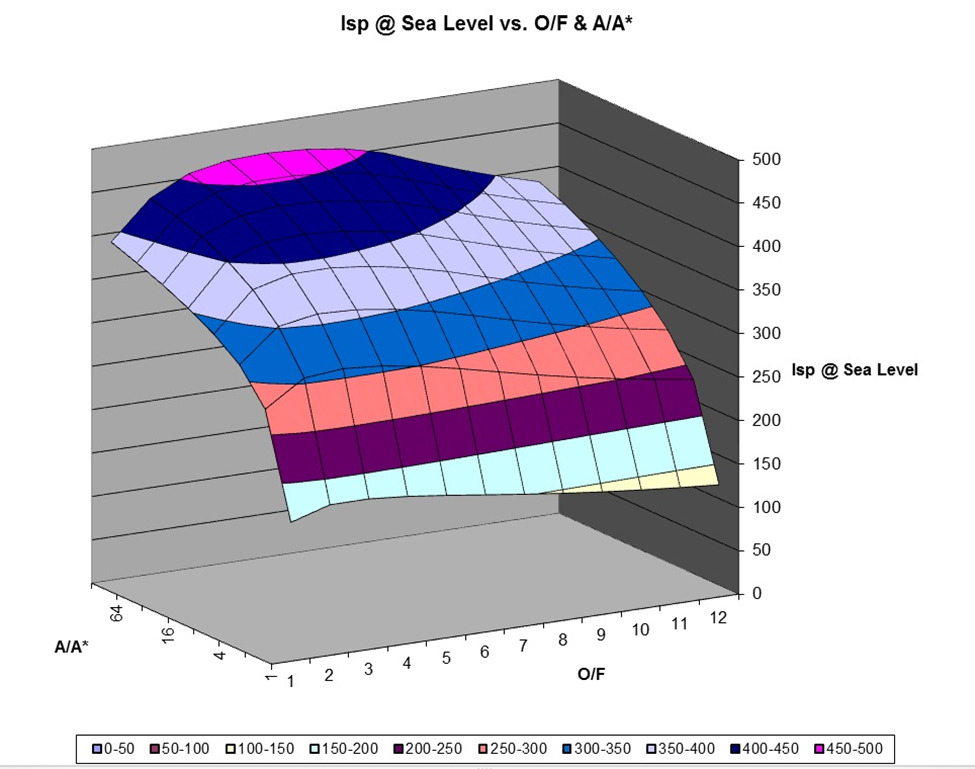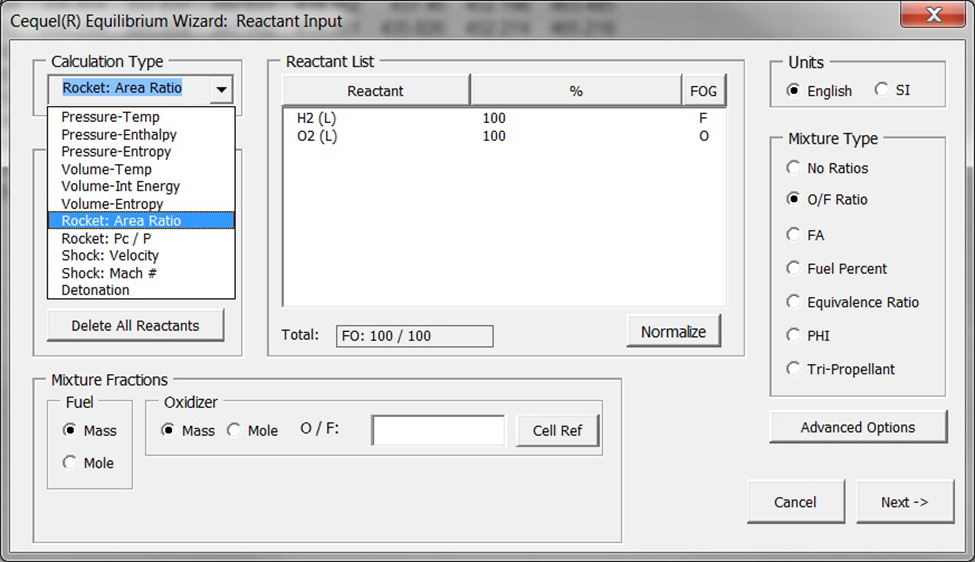Cequel: Chemical Equilibrium in Excel
Cequel is an Excel Add-In that allows the user to perform chemical equilibrium calculations as an Excel spreadsheet function. A single function call can yield the same information as a single run of the NASA CEA program (Chemical Equilibrium with Applications) program. However, since Cequel provides a full-fledged Excel function, you can perform multiple CEA runs by using cell references and copying the function. This program is intended for:
- Performing parametric analyses of chemically reacting devices to explore or optimize designs
- Establishing models requiring CEA in Excel spreadsheets that can be updated by changing cell values
- Exploring “what if” scenario evaluation of different mixtures and conditions quickly, efficiently and visually
- Encouraging students’ understanding of chemically reacting devices by allowing them to solve complex problems using Cequel as a supplementary curriculum for Thermodynamics, Combustion, Turbomachinery Design and Rocket Design courses
Parametric Analysis
Cequel provides the user with a function that can accept input from other cells in the worksheet, and returns the chemical equilibrium parameters selected by the user. In this example, a liquid rocket engine’s Isp is evaluated as a function of both the area ratio and the O/F ratio, using cell references. The problem definition itself is included in the spreadsheet. This allows the user to change the reactants, the chamber pressure, and any other chemical equilibrium input from the spreadsheet itself.

Cequel provides the user with a function that can accept input from other cells in the worksheet, and returns the chemical equilibrium parameters selected by the user. In this example, a liquid rocket engine’s Isp is evaluated as a function of both the area ratio and the O/F ratio, using cell references. The problem definition itself is included in the spreadsheet. This allows the user to change the reactants, the chamber pressure, and any other chemical equilibrium input from the spreadsheet itself.
Visualize Computations
As an Excel spreadsheet function, the output from Cequel may be used in charts and surface plots to show graphically where the optimum design point for a given configuration should lie. The ability to quickly sort through potential designs provides the user insight into where to focus their attention, and provides the freedom for the designer to explore other options.

Interactive Wizard to Simplify Inserting Function in Worksheet
The Cequel function can have a long list of input parameters, as well as output parameters to specify which equilibrium terms to include in the spreadsheet. To simplify the input process, Cequel includes a “wizard” that guides the user through the inputs required to define each of the problem types evaluated by Cequel, including selection of reactants, specification of mixture ratios, and the desired output terms. If required, Cequel can behave as an Excel “array function”. This allows Cequel to return multiple chemical equilibrium output values using only one actual function call.

Technical Specifications
Cequel is a Microsoft Excel Add-In analysis tool for assessing the products of chemical combustion under equilibrium conditions. Cequel provides four major comprehensive applications:
- Gas Properties (TP, SP, HP, TV, UV, SV)
- Rocket Performance (Area ratio, Pressure ratio)
- Shock Waves (Velocity, Mach number, Shock angle)
- Chapman-Jouget Detonations
Chemical equilibrium is the classic limit cycle case of all combustion processes. As with all equilibrium processes, it represents a balance between competing mechanisms. When a system is in chemical equilibrium, the chemical reactions for production and destruction of species are occurring at an equal rate, so that the concentrations of the reacting substances do not change with time.
Thermodynamically, chemical equilibrium is the condition in which there is no tendency or potential to make the composition of the system change; that is, no change can occur in the system without outside work being done. Cequel solves for products of combustion at chemical equilibrium by minimizing he Gibbs free energy, which is equivalent to finding the point where the maximum net work has been extracted from the system.
Cequel is based on the industry standard NASA Lewis chemical equilibrium programs CET and CEA, as described in the CEA manual: Gordon, S. and McBride, B. J., Computer program for calculation of complex chemical equilibrium compositions, rocket performance, incident and reflected shocks, and Chapman–Jouget detonations, NASA SP 273, 1971
